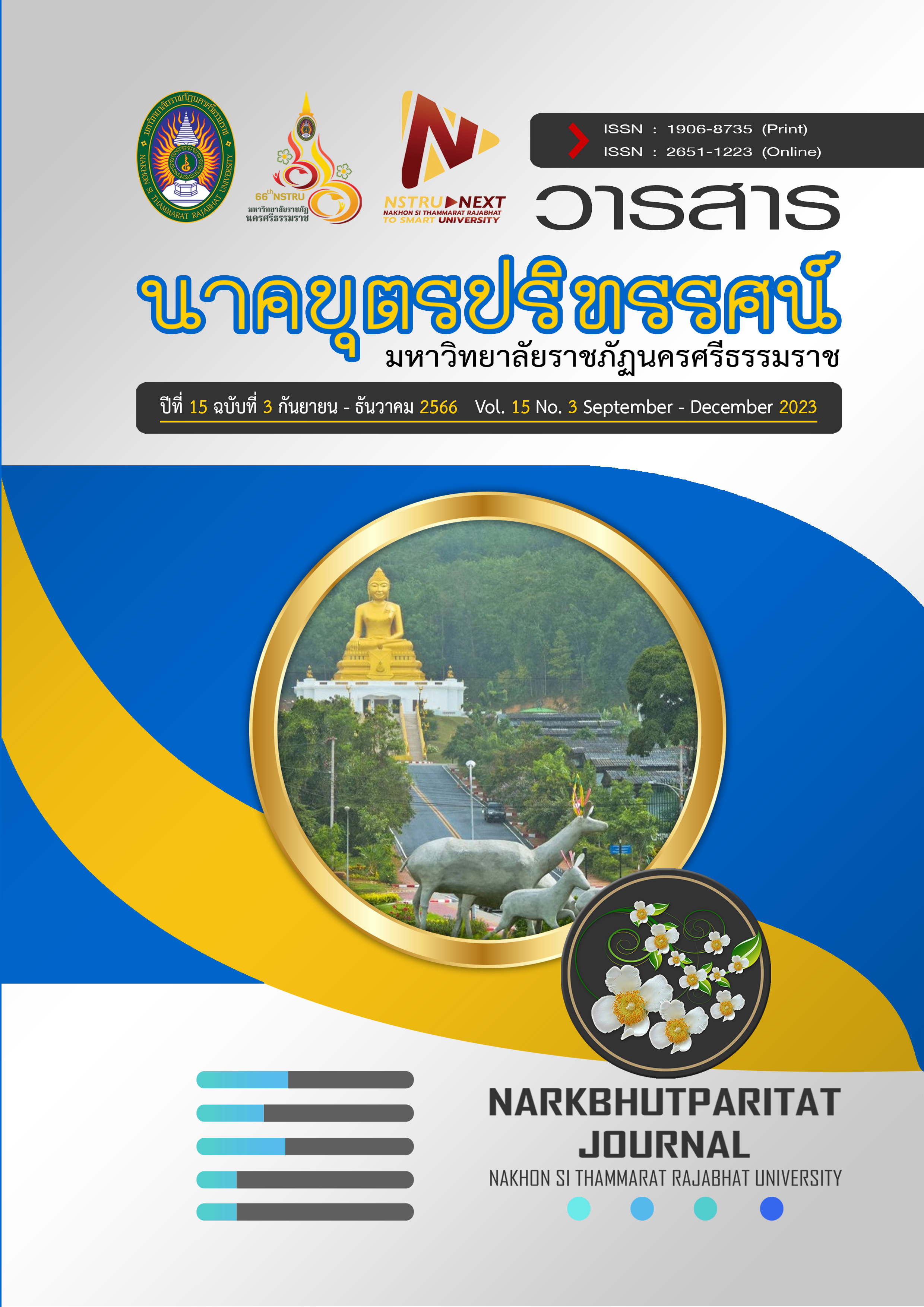Evaluation of the Performance of the Ban Tha Lon community financial institution Tambon Thakham Phunphin Districts, Suratthani Province
Main Article Content
Abstract
This research is a mixed methods research. The objective is to evaluate the performance and study problems and provide recommendations for operational guidelines of the Ban Tha Lon Community Financial Institution. The population is 255 board members and members of the Ban Tha Lon Community Financial Institution. It is a quantitative research. Data were collected from a sample of 156 people using a questionnaire. Analyze data with ready-made programs Qualitative research interviews 8 key informants, conducts a synthetic analysis, and presents them in descriptive form.
The results of the study found that the overall performance of the Ban Tha Lon Community Financial Institution was at a high level. In each aspect, it was found that in the context, the objectives of the Ban Tha Lon Community Financial Institution were clear and consistent with the village's development plan. In terms of input factors, it was found that the number of committee members was appropriate and had knowledge and management abilities. The amount of money was sufficient to meet the loan needs of members. In terms of process, it was found that loan consideration was appropriate and the committee is transparent, fair, and verifiable. In terms of productivity, the economy of the people in the village got better helping to solve the problem of high interest rates from informal loans. It also helps create a joint learning process between the community, government, and private sectors. In terms of problems, it was found that members’ debts were not repaid, problems with the regulations of the funds themselves, legal problems with financial institutions, and political problems. Members who lack discipline, lack knowledge, and have problems with competitors, especially banks. Suggestions 1) The committee should set up a systematic monitoring of loan payments including interest in order to have sufficient working capital. 2) Create financial discipline, promote household accounting for members, leading to savings, and reducing duplicate debt problems. 3) The values of transparency, honesty of the committee should be instilled in the next generation who will come to operate in the future. 4) It should develop and promote careers in the community to reduce the burden of debt and informal debt of members, and 5) promote member participation leading to the sustainability of community financial institutions.
Article Details

This work is licensed under a Creative Commons Attribution-NonCommercial-NoDerivatives 4.0 International License.
References
Chulwanno, J. (2014). Evaluation of Wangsila Village Funds, Moo 13, Tambon Saikhao, Amphoe Soidao, Chanthaburi Province. (Master of Public Administration Thesis), Burapha University, Department of Public and Private Sector Management College of Public Administration. (in thai)
Dechthamrong, U., & Chansanam, W. (2020). Key Success Factors of Community’s Economy Development: A Case Study of the Financial Community Institute, Chaiyaphum. Journal of the Association of Researchers, 25(1), 72-89. (in thai)
Khattiyawong, T., Kuanprasong, L. & Niyomwong, T. (2018). Development base of the strength and sustainable financial foundation of the members in community (village) funds, Makham District, Chanthaburi Province, which affected the development of their own community funds. Rajabhat Rambhai Barni Research Journal, 12(1), 13-27. (in thai)
Limsuwan, W. (2018). The Role of Microfinance on Poverty Reduction. Journal of Humanities and Social Sciences Phranakhon Si Ayutthaya Rajabhat University, 6(1), 59-76. (in thai)
Simaprasert, W., Thanaphatto (Thipwong), S., Chimahat, P. & Mai-on., S. (2021). A Study of Management for Community Financial Institution with Participation of Banhuaingor’s Community Members, Thungphla Sub-District, Khokpho District, Patthani Province.
Journal of MCU Nakhondhat, 8(4), 103-117. (in thai)
Surat Thani Provincial Community Development Office. (2020). Village and urban community fund information Surat Thani Province. Retrieved 2021, May 5, from https://suratthani.cdd. go.th/service/national-village-and-urban-community-fund. (in Thai)
Thammasatchakarn, W., Thammasatkan, A., Hanghon, P., Siriwanno, W. & Muangnam, W. (2019). Community Welfares Model of Ban Khao Dee Community Financial Institution, Chumphon Province. Journal of Human Sciences, 22(2), 69-100. (in thai)
Wichianploet, S. (2015). National Village and Urban Community Fund. Retrieved 2016, August 4,
from http://cdc.parliament.go.th/ewtadmin/ewt/parbudget/ewt_dl_link.php?nid= 105. (in thai)
Wiset, S. (2017). The Model of Management Development of Community Financial Institutions in Nakhon Phanom Province. (Doctor of Public Administration Thesis), Maha Sarakham Rajabhat University, Department of Public Administration graduate school. (in thai)
Yamane, Taro. (1973). Statistics an introductory analysis. New York: Harper & Row.


